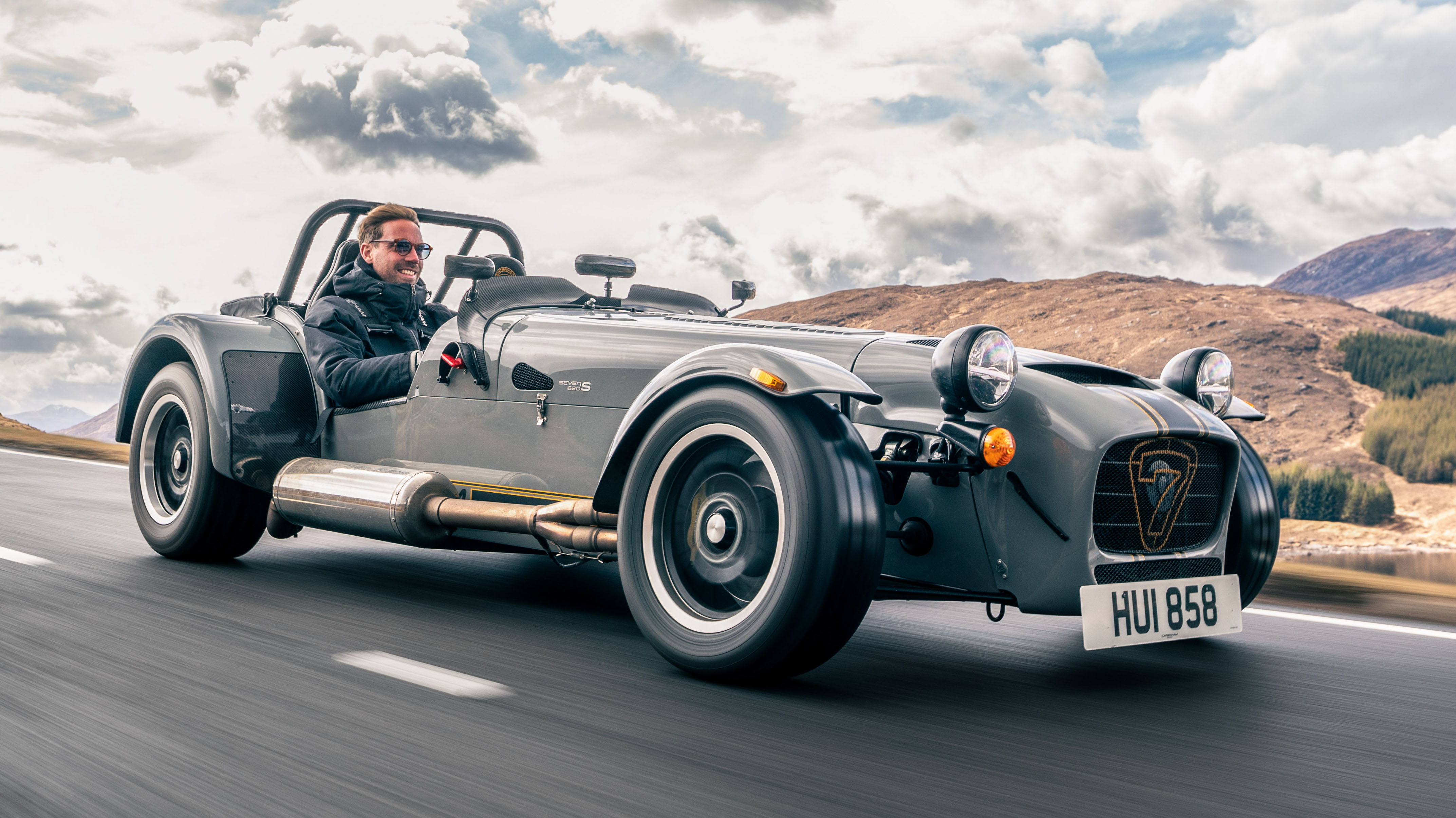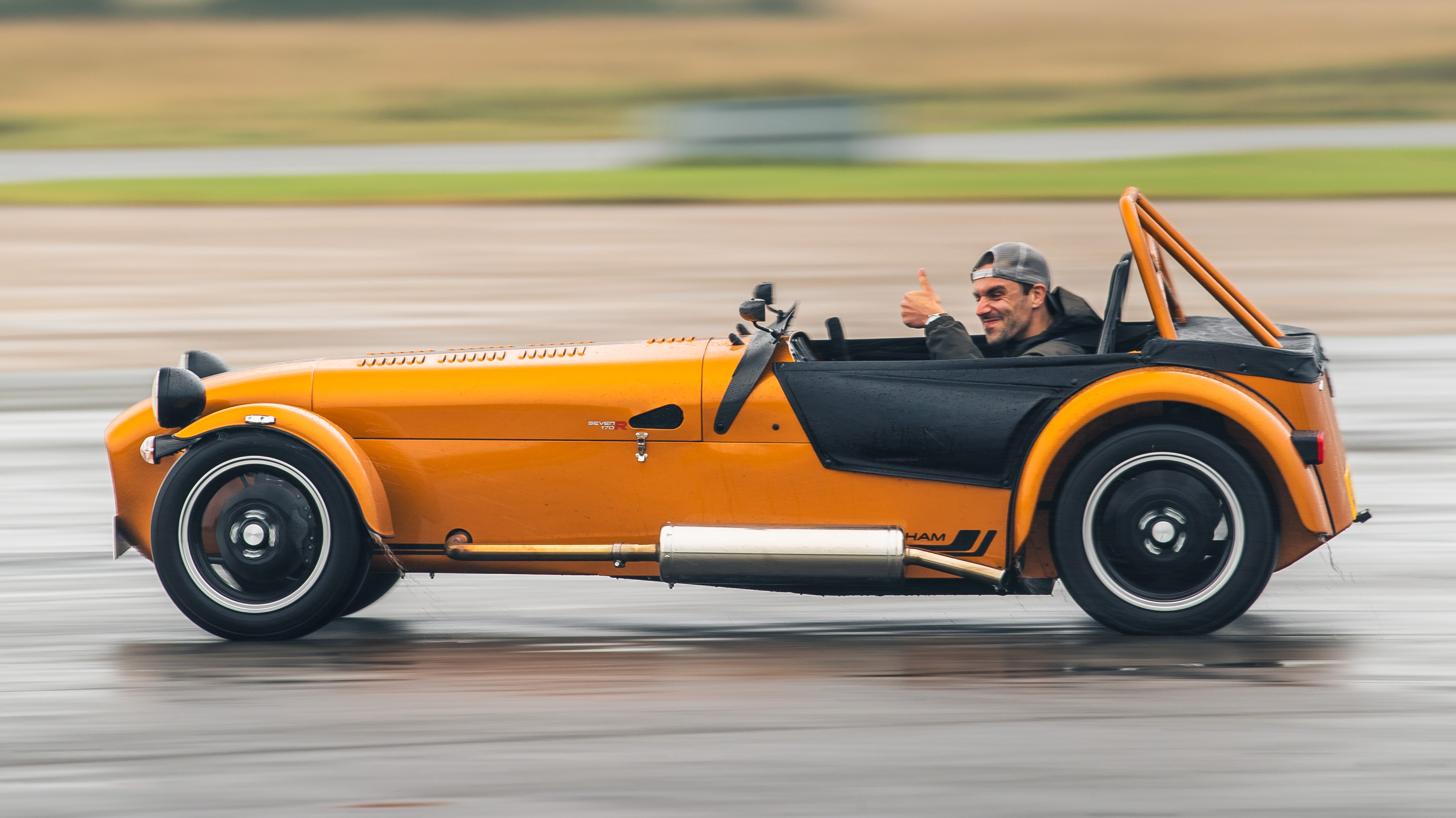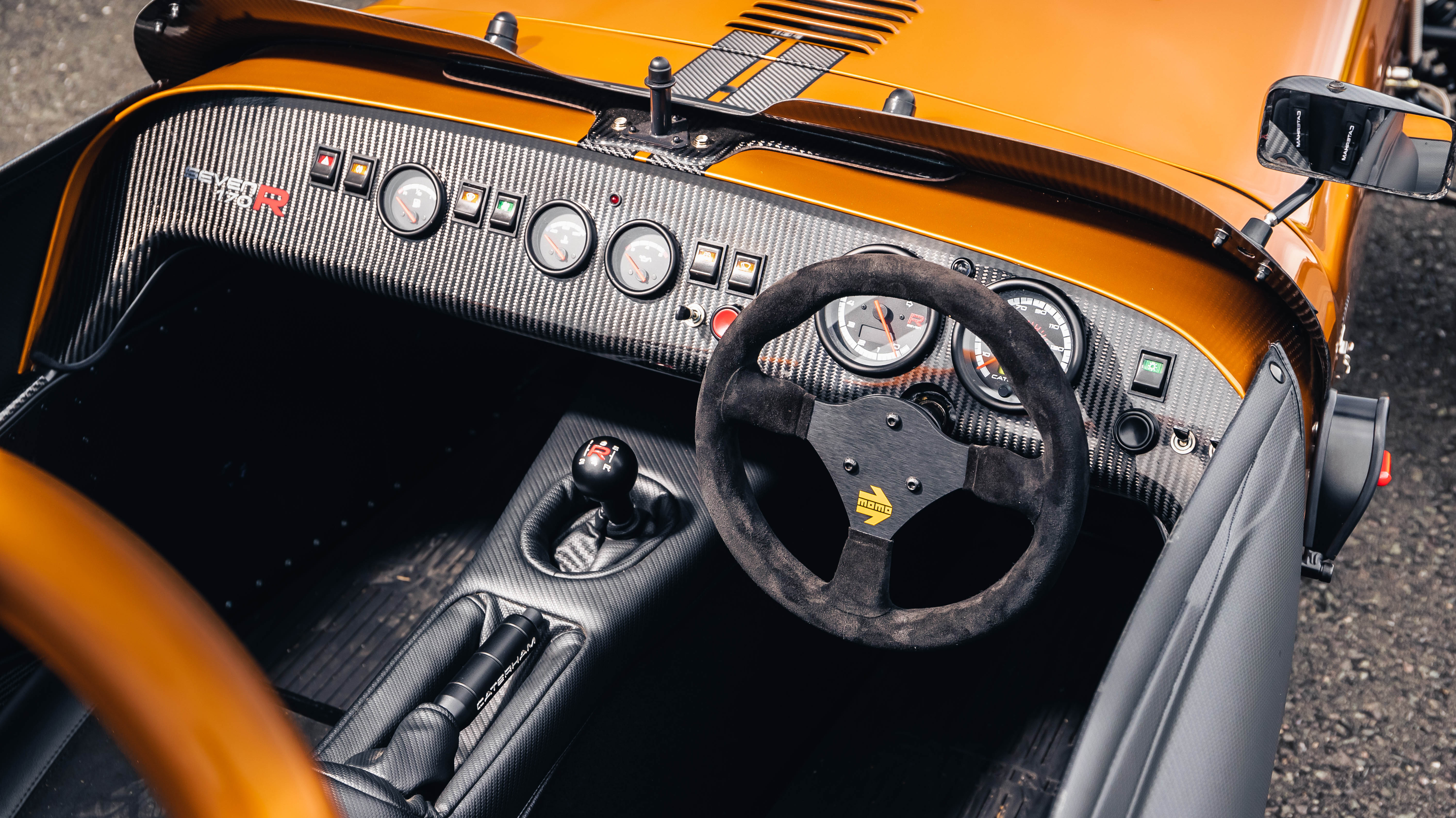
Caterham Seven review
Driving
What is it like to drive?
As with anything very light, the Seven is connected in a way that a big, powerful supercar can never be. Unassisted steering means that the information fed back through your palms about what the front wheels are doing is exceptional, and sitting next to the back axle means that you can react very quickly to slides or movement.
Sitting next to the back axle also means that you’ll feel every single pimple on the road, lose the feeling in your legs and be low enough to be lost under a decently sized articulated lorry. With its open wheels and microscopic body, you can place it on the road with millimetric accuracy; looping all the corners together is a total doddle, thanks to the superb steering; and despite an antiquated rear suspension set-up, it actually rides amazingly well.
Will it scare me if I'm a beginner to sports cars?
Actually, it might just be the perfect learner tool for the basics of car control. With no ABS, no traction control, no stability control and no glovebox to file your excuses, you have to work things out for yourself. Stomp on the brakes: they’ll lock up. Throw it into a corner too fast: it’ll understeer. Turn in and mash the throttle: it’ll oversteer. Manage all these things effectively and you’ll make enviable progress and have the largest smile of anyone on the road.
The baby of the range – the 170 – is set up beautifully for this learning process, with skinny tyres, just 440kg of mass to move (it’s the lightest road-going Caterham ever) and the boosted three-cylinder engine making just 84bhp and 85lb ft. The speeds might not be supercar-high, but it’s all the better for it. Maximum attack everywhere, without the threat of an overnighter in the local nick.
For most of the range, you can spec either a standard road-biased ‘S’ or track-focused ‘R’ (£1,000) packs. This makes a substantial difference. The S has an open diff and a gentler approach to life, while the R has uprated brakes and suspension, lightweight flywheel, harnesses and bare seats. This S also has the, er, more commodious (OK, wider), SV chassis for the portlier petrolhead, although it’s worth noting that’s not an option with the 170 or the retro Super Seven 600.
If you’re new to lightweight cars, the 360 is a sweet spot; not too bare, not too hard, not too fast but still amusing, and very satisfying. But once you get used to it, the R chassis is good enough to make you want more. Maybe enough to want the 420, which is also glorious. And the deranged 620 models are addictive. But the ‘S’ variant of that with a manual gearbox (rather than a race-bred sequential) is infinitely easier to live with on the road.
Just go easy on the throttle pedal as four rubber contact patches and no aids mean you still have to think about what you’re doing rather than lazily relying on electronic chassis wizardry and fat tyres to do the heavy lifting or bail you out. Remember, this is a thing with 310bhp that weighs around 600kg. Bonkers.
Any nerd notes from the range?
The 420 Cup, a track-focused special launched in 2022, is the first Seven ever with adjustable dampers from the factory, and it's wicked fun. But again, make sure you can live with the sequential gearbox before you buy.
Could I live with it day to day?
The fuel tank is tiny, so prepare to stop for fuel a lot. But it is fun to road trip. Just plug your ears with decent in-ear headphones as it gets noisy at motorway speeds. And then try to forget about the lack of safety equipment. There’s no airbag, and the car can limbo under the central reservation so, if you were to have a shunt, you’d end up wearing the Armco as a chin strap.
But when you loosen up and get over that, you realise that with good tunes, decent weather and no modern comforts to distract you, you just get on with the act of driving. Want to make every journey an event? The Seven is the car for you.
Featured

Trending this week
- Car Review
BMW iX3






